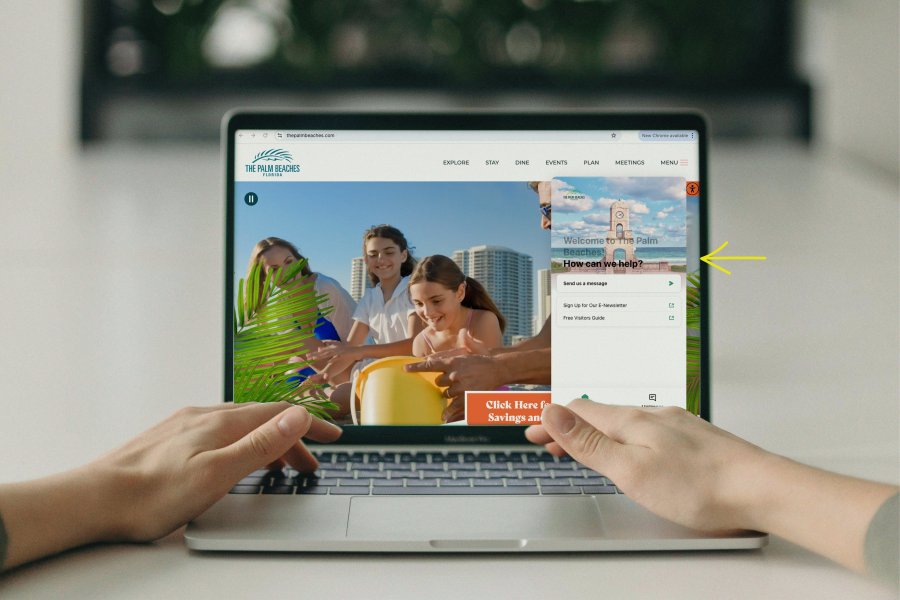Inclusion Goes Beyond Compliance for Travel Websites
October 8, 2020
As DMOs and businesses reflect on the way they promote their destinations and themselves, representation in advertising is once again trending. Madden believes that all people deserve to enrich their lives through travel, and ensuring a positive experience for all travelers is more important than ever. Using the example of disability compliance, we’ll provide you with some insight and action items to look further into true representation and help you deliver strong resources that benefit all travelers.
Checking the Box
Since 2003 in the NFL, there has been a rule for franchises called the “Rooney Rule,” named after the former owner of the Pittsburgh Steelers, Dan Rooney. It requires teams to interview at least one ethnic-minority candidate for any open head coaching position. Despite this, the rate of minority coaches hired has dropped in the past decade, and continues to be a challenge. So while teams are compliant with the rule, the lack of inclusion persists for the league.
As with the NFL, America has adopted many rules and regulations regarding compliance on a variety of fronts, most notably in the area of disability. The ADA, passed in 1990, is a wide-reaching and comprehensive set of laws and regulations that revolutionized the country and opened up doors (literally and figuratively) for millions of Americans with disabilities. I know this, because I am one of them. As a wheelchair user in our country, I have directly benefited from the ADA and it has greatly improved my quality of life for many years now. To address similar issues in cyberspace, a more recent set of guidelines called the Web Content Accessibility Guidelines (WCAG) has been set up to help companies and organizations ensure that their websites are accessible by people with disabilities.
But along with the Rooney Rule, online disability inclusion often focuses more on checking the WCAG compliance box instead of actively thinking about the people who need the compliance to begin with. For example—a destination website might go to great lengths to ensure that screen readers can easily read pages to help people with visual impairments, but does it offer any resources on the site to help those people visit the destination in person?
Moving Beyond Perceived Inclusion
As a disabled traveler in America, I experience countless hurdles. Knowing details like cargo door dimensions on airplanes is critical to ensure that my wheelchair won’t be violently disassembled by airline staff to fit in the cargo hold, and non-emergency medical transport resources such as accessible public transit let me get around once at a destination. Information is key for me to travel safely and successfully. Many times, I get more accessible information about a business such as a hotel by looking at provided pictures of rooms than I do from reading their descriptive copy. As the saying goes, a picture can be worth a thousand words.
But beyond the information those words in picture format give me, they can also provide comfort. Humans tend to respond favorably to pictures of people that they see as “like them.” While seeing pictures of disabled travelers in a destination helps show me things such as how tall the bed is in that hotel, they more importantly make me feel included. Believing that the pictures on a site are genuine is key to me as a disabled person. To this end, the use of stock imagery can actually be detrimental to what is otherwise a sincere attempt to be inclusive.
Making Your Website a True Inclusive Resource
So what steps can be taken to help a website and destination evolve from merely compliant to truly inclusive for not only people with disabilities, but all people? As with all change, many little things can easily turn into a bigger and more impactful result. Some easier areas to consider are:
- Go beyond WCAG compliance on your site, and offer real resources for traveling to and within your destination.
- Create and feature content and information from all the amazing cultures and people that are in your destination.
- Acknowledge that most travelers already have their own resources from like-minded travelers (be them logistical or inspirational), and consider partnering with those resources in your area to offer information and content.
- Work with resources in your area to get advice, tips, and tricks that you can share with people who have never been to the destination before.
- Ensure that imagery on your website is not only inclusive, but genuine and (ideally) helpful. If I can see a picture of a person in a power wheelchair at an attraction, I feel included and I also know that it’s likely that I, too, can go there and have the same positive experience.
One of the most amazing aspects of humanity is our diversity and our uniqueness, but along with this, it is critical that we work to help each other feel included in our society. This is why true inclusion for everybody has to go beyond the simple act of compliance.
If you are looking for more information as a disabled traveler on your rights while flying and the resources each airline provides check out this article.



